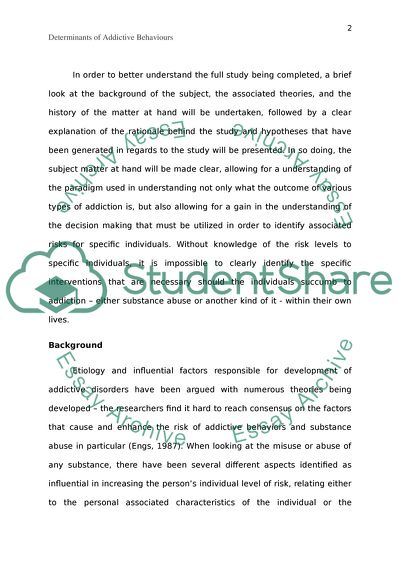Cite this document
(Personality, Psychopathology and Emotional Regulation: Determinants of Research Proposal Example | Topics and Well Written Essays - 3000 words, n.d.)
Personality, Psychopathology and Emotional Regulation: Determinants of Research Proposal Example | Topics and Well Written Essays - 3000 words. https://studentshare.org/psychology/1837072-personality-personality-psychopathology-and-emotional-regulation-determinants-of-addictive-behaviours
Personality, Psychopathology and Emotional Regulation: Determinants of Research Proposal Example | Topics and Well Written Essays - 3000 words. https://studentshare.org/psychology/1837072-personality-personality-psychopathology-and-emotional-regulation-determinants-of-addictive-behaviours
(Personality, Psychopathology and Emotional Regulation: Determinants of Research Proposal Example | Topics and Well Written Essays - 3000 Words)
Personality, Psychopathology and Emotional Regulation: Determinants of Research Proposal Example | Topics and Well Written Essays - 3000 Words. https://studentshare.org/psychology/1837072-personality-personality-psychopathology-and-emotional-regulation-determinants-of-addictive-behaviours.
Personality, Psychopathology and Emotional Regulation: Determinants of Research Proposal Example | Topics and Well Written Essays - 3000 Words. https://studentshare.org/psychology/1837072-personality-personality-psychopathology-and-emotional-regulation-determinants-of-addictive-behaviours.
“Personality, Psychopathology and Emotional Regulation: Determinants of Research Proposal Example | Topics and Well Written Essays - 3000 Words”. https://studentshare.org/psychology/1837072-personality-personality-psychopathology-and-emotional-regulation-determinants-of-addictive-behaviours.


